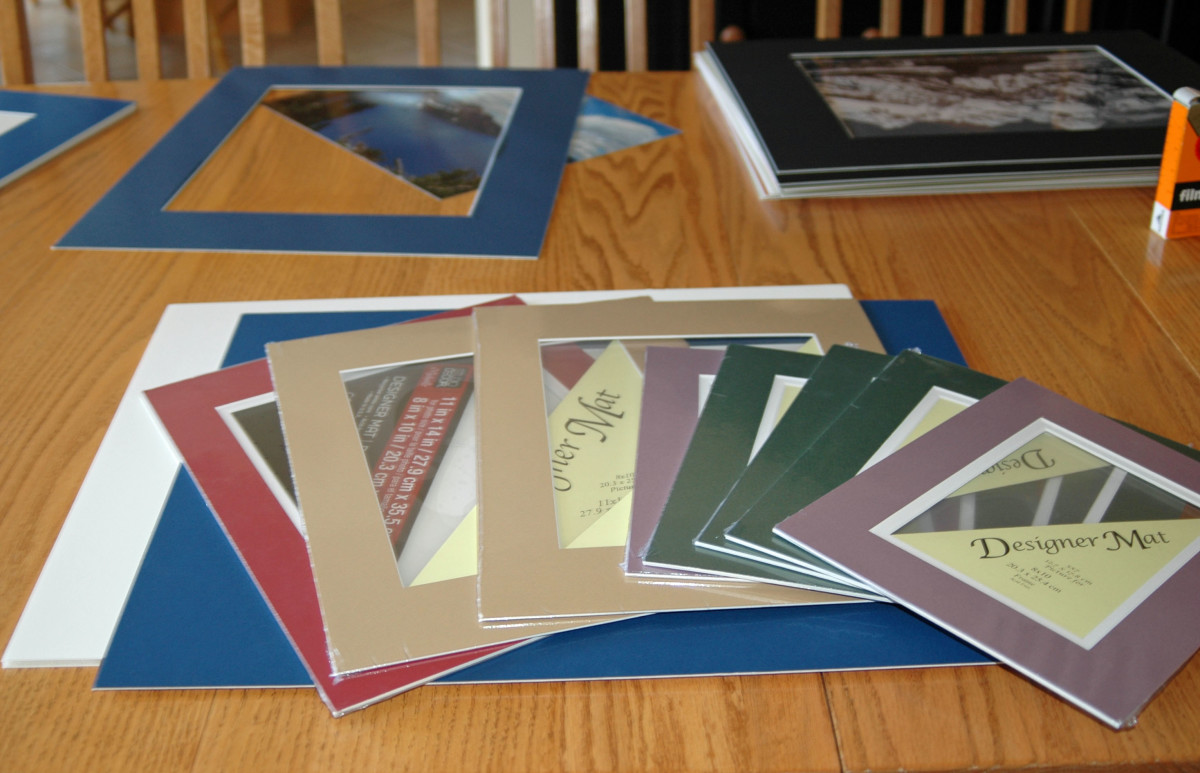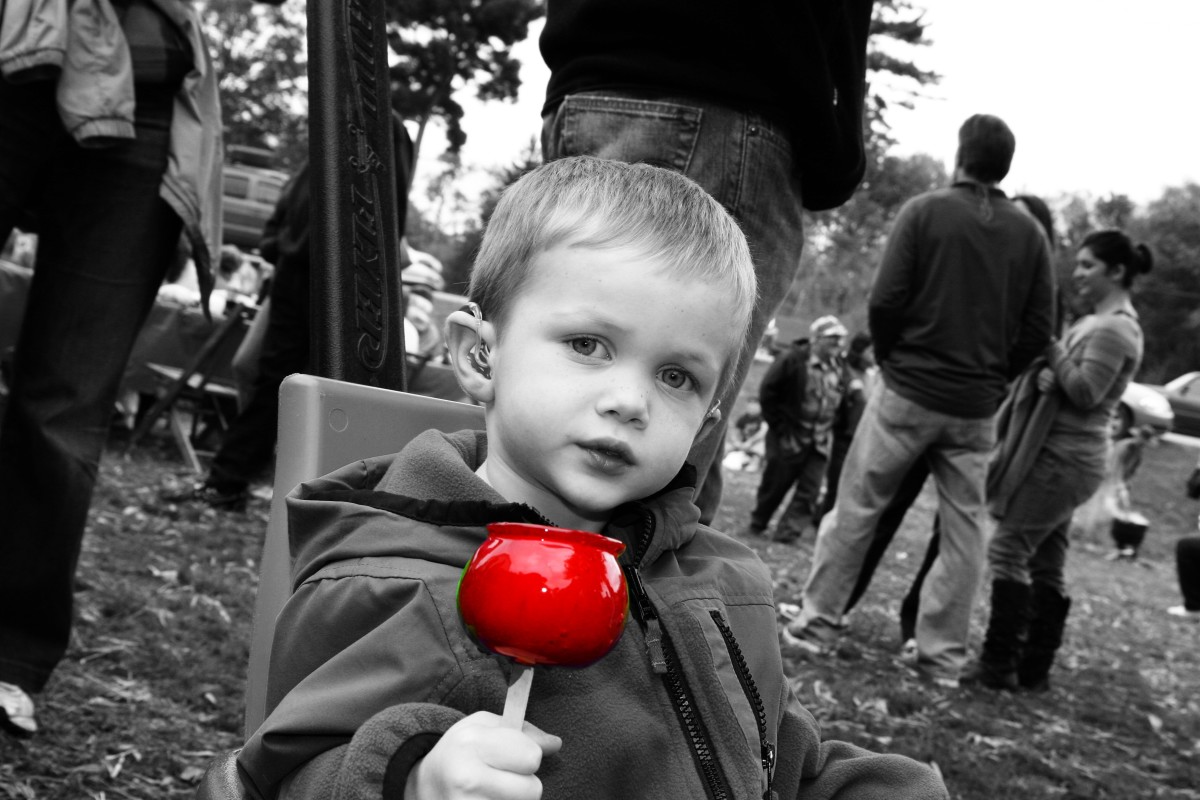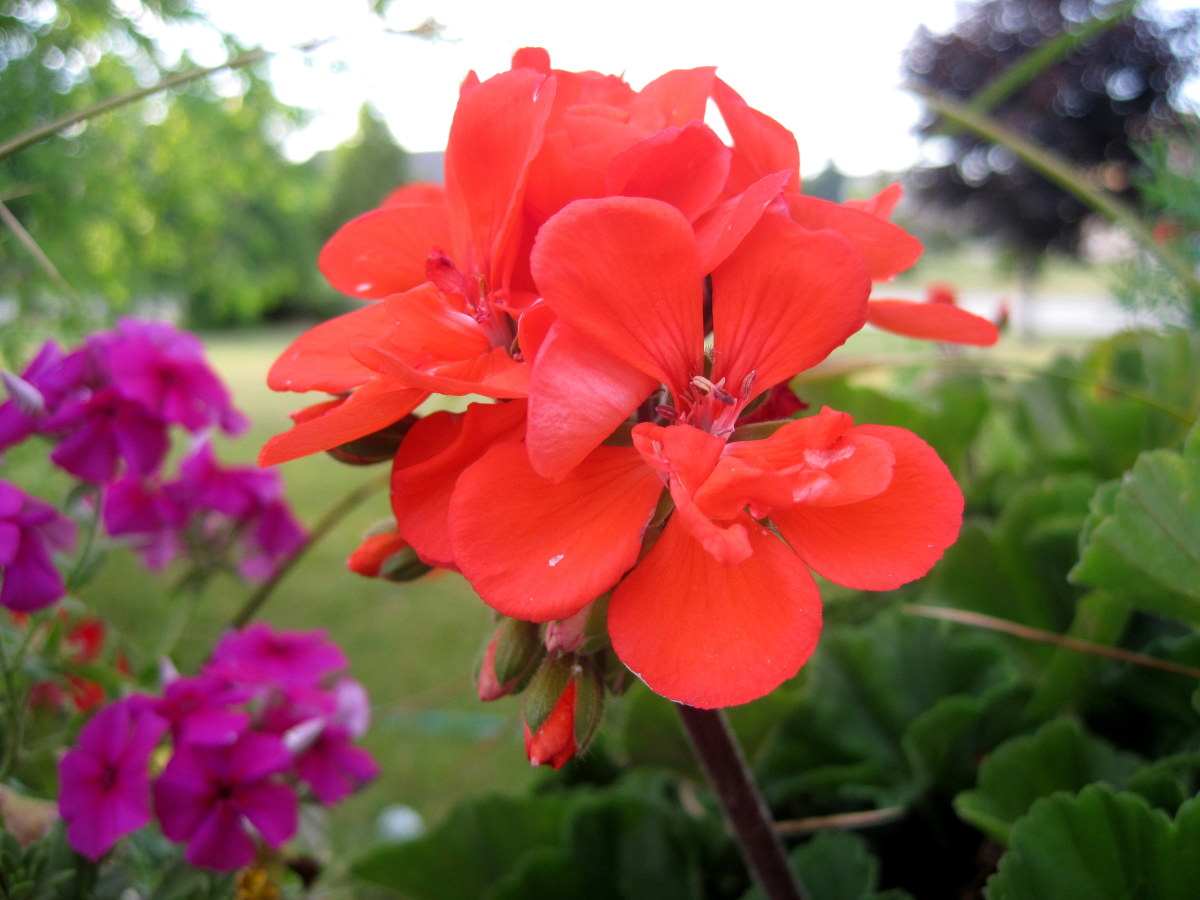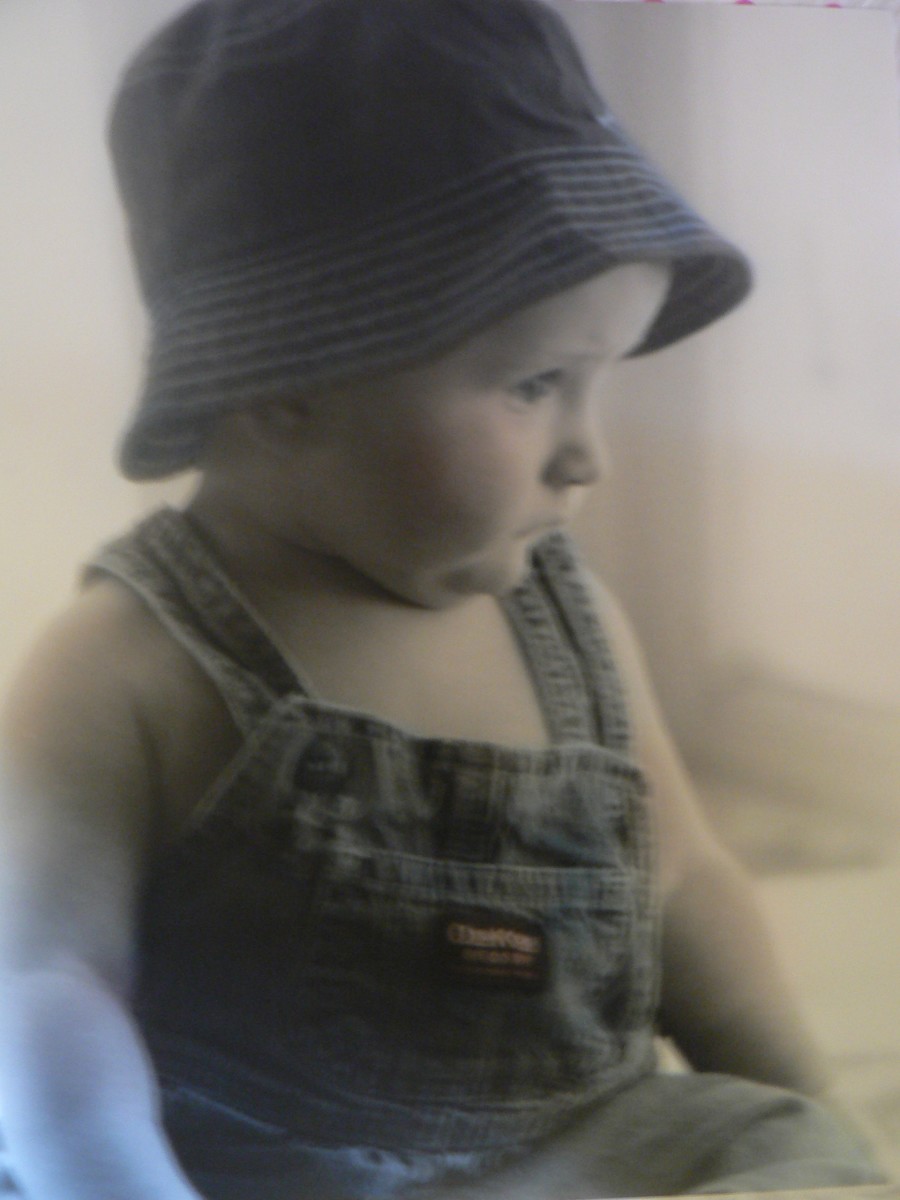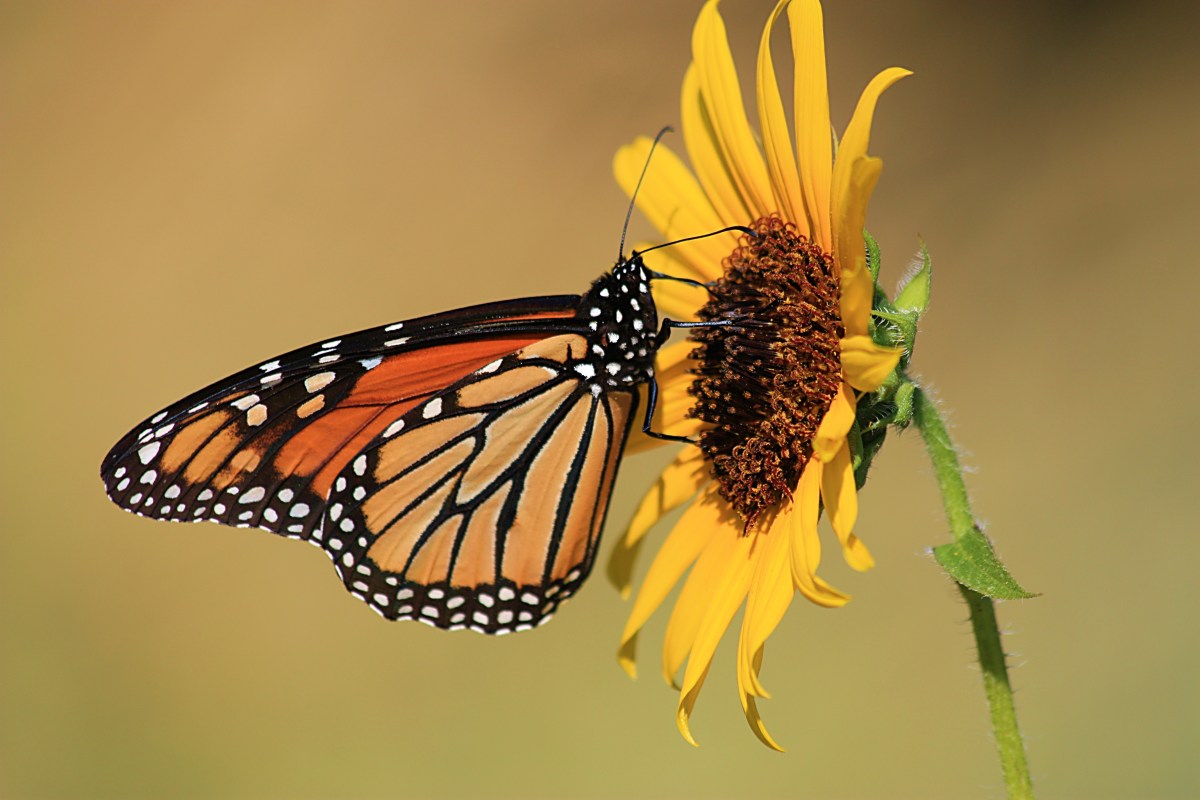Photographing Flowers: A Different Perspective In Photos
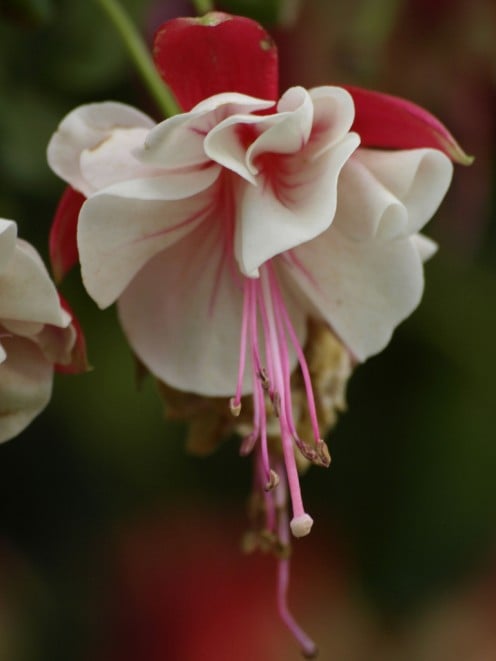
Perspective, creativity and depth of field
I love black and white photography, and still to this day shoot black and white on a regular basis. My grandfather loved shooting photographs in color; he said it was a breakthrough in photography when color film became available and black and white was outdated. I said black and white was classic and beautifully simple. We were from different generations but we both appreciated the art of photography. The one subject that we both loved to shoot was nature, especially flowers and plants. The wide array of vibrant color and shapes was enticing, and even better, right in our backyard. I never turn down the opportunity for a great flower photo shoot. I have learned that a photograph is not only about the subject you are shooting; it is about how the image makes you feel when you look at it, and ultimately if you are pleased with the final piece.
Perspective is one of the most important parts of photography. What are you trying to achieve with the photograph, and what do you plan to do with it when it is finished? If you are shooting a reference photo you want to make sure that you are including every relevant piece of image possible to make sure that your viewers gets the most out of your image. If you want to show the size of the flower you want to show the entire flower from ground to petal. If you want to show relevance of size, place it next to something that is common, and your viewers will understand the comparison. It does not necessarily need to be a ruler; it could be anything that is common enough people will recognize the object. For example, the object could be a fork for height, a drinking glass for depth or even buttons and coins. Be creative and integrate the objects into your images so that it looks like it belongs, and that is not a mistake. Most importantly, make sure that all parts of the flower that need to be shown are in the final photograph and they are clear. A trick to placing more focus on the flower is to blur the background using depth of field, which will highlight the subject of your photograph.
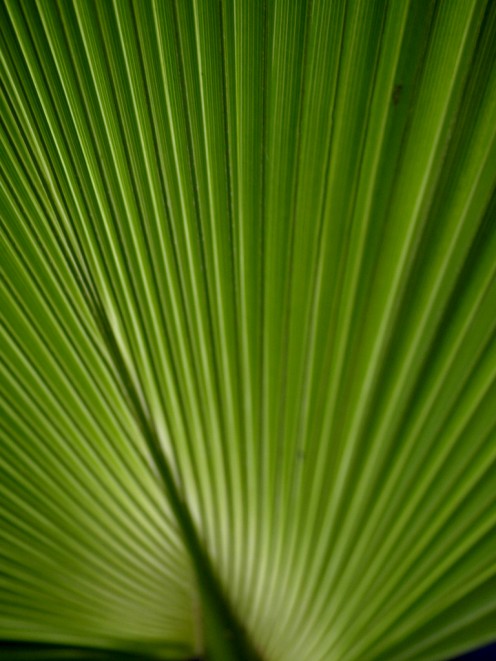
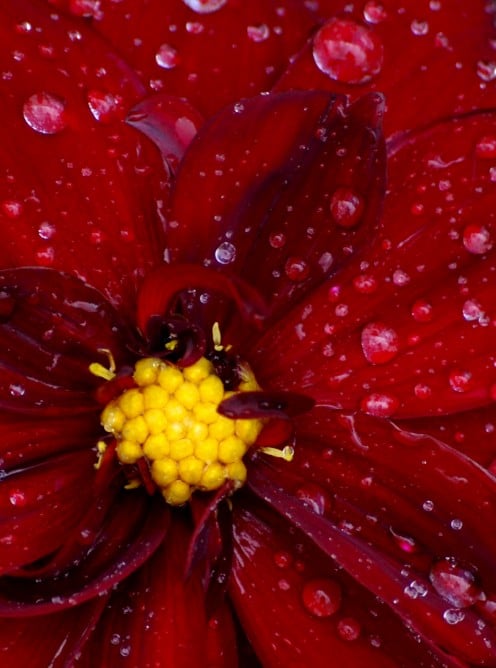
Macro Photography
If you are not shooting a reference photograph, and you have free reign over all creative decisions; you have so many options for perspective just with one flower! Over the last two years my fiancé and I have created flower gardens around our yard, and because of this, I now have unlimited access to multiple subjects. I find that when I take a photo one day, I can go back the next day and take a photo of the same flower, and have it look completely different. Lighting plays a key role in this; however, the perspective alone can make a world of difference. How many people get so close to a flower they can count the droplets of water on each petal, or the seeds in the middle of the flower? Macro Photography is the art of closing in extremely close to your subject and can create some amazing images. Even though people may know that it is a flower it is ok because the images are strong with the vibrant colors, amazing patterns of nature and natural shapes. Sometimes it amazes me when I look at my photos on my screen how intricate and perfect nature can be when really looked at close through a lens. Macro photography is not confined to only nature and flowers. It gives a new perspective on most anything that you choose to take a photograph of, and can be just as stunning as a photo of flowers and plants. It’s all in how you set the mood of the image, what you are trying to convey for a feeling, and what the purpose is of the photograph.
Another method is specifically positioning your subject in your frame. Now, I could go into the rule of thirds and semantics of the process, but really, the goal here is to give you options for a different perspective when shooting photos. More or less, I am saying that you don’t necessarily need to shoot a photograph of a subject exactly how you initially see it, you can change your own image perception. How you choose to frame your photographs can make a big difference on the final mood of the photo. The key here is that you do not need to make your focal point the center of the image. Digital photography has given us the option to play, and play, and play some more without the hefty weight of film and film processing fees. You can’t mess up, you just learn as you go, and not only is it the best way in my opinion; it is also the most fun. Take a look at other photographers work and look for specific reasons why you like or may not like a particular image. Was the flower facing into the camera, or was it facing the right of the frame and positioned all the way to the left of the frame? Was it cropped in tight with very little background? Subjects in your frame can direct you in a specific direction. Be aware when you look at photography created by other artists. Where are your eyes drawn when you first look at the image, and where does the subject lead you to next? What is the path that your eyes take to completely look at the photograph in front of you? Then, go back to your own photographs, and do this same exercise. Where is it that your eyes first go, and is the current path that your eyes choose, is that the path you intend? If it is not the intended outcome, don’t get frustrated, try again, and if you can’t seem to get that perfect frame, try another flower. You may be surprised how easily it will happen when you move on and learn from another subject. From there, go back to the original flower that gave you such heartache, and you will find how easy it will be for you to get that perfect shot.
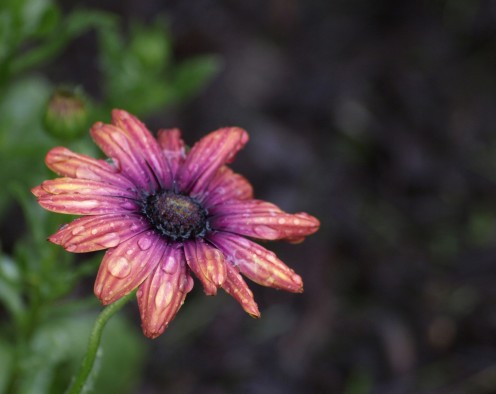
I mentioned how you can change the perspective of the flower that is your subject. Have you ever been curious how a snail sees a dandelion? Or what it looks like to walk through grass that is twice your size? Wouldn’t that just be amazing? Well, the closest we may ever get is through imagery (or maybe Disney World). Get on your belly and look up at the flower! It may be completely different on the bottom of the flower. How is the stem attached to the petals? Sometimes the most beautiful shots of people are the shots they don’t pose for…some call these happy accidents. Think of this for flowers as well; capture the side that people don’t normally get to see.

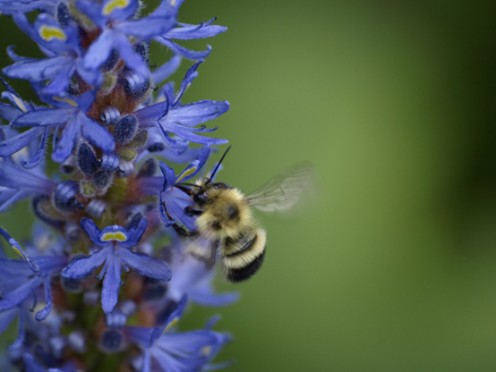
When you are photographing a subject, remember to include their environment if it is relevant. By doing this you are telling a story through the photograph. I once overheard someone at a local flower farm mumbling and frustrated because he wanted a perfect photograph of a specific flower without any “extra baggage” as he called it. Well the extra baggage was a healthy bumblebee and it was not moving, so the photographer moved on to the next batch of flowers. That bumblebee is part of the flower’s life, and therefore part of its natural environment and made the photograph that much more interesting in my eyes. With the addition of the bumblebee, the photograph has now turned into a story.
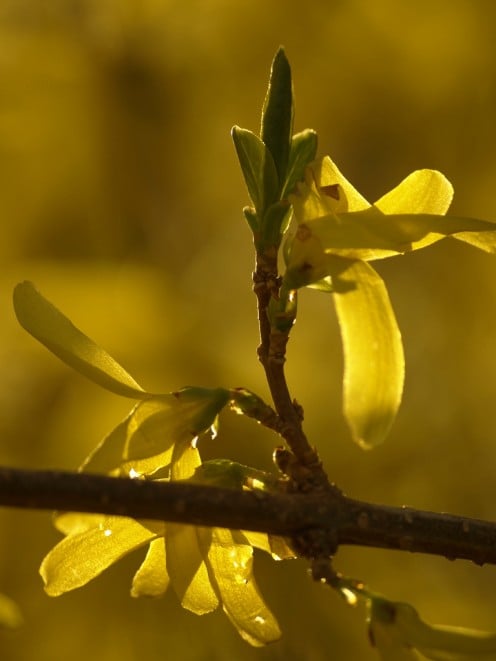
Lighting Plays a Big Role
Lighting plays a big role in the overall mood of a photograph. The most common problem is that there is too much overhead light (sun) that is directly on the subject resulting in a washed out photo with very little contrast. The best time for natural light is early morning and late afternoon, or if it is an overcast day, you can use mid afternoon light and still be successful. You will see much more contrast in your photographs as well as richer color. Once you have mastered natural lighting, play around with other lighting. You can even use some lens filters to add additional mood to your image. Go around and look at flowers in the early morning hours, and then go back and look at them when the sun is setting. You will see how the colors change, and the mood of your environment changes. Keep this in mind when photographing your subject flowers and plants. When your viewers look at your photographs with different light settings, they too will feel the mood of the environment, and possibly be able to link it to something personal in their own life. This is what makes a photograph powerful: the ability to set a mood and initiate emotion.
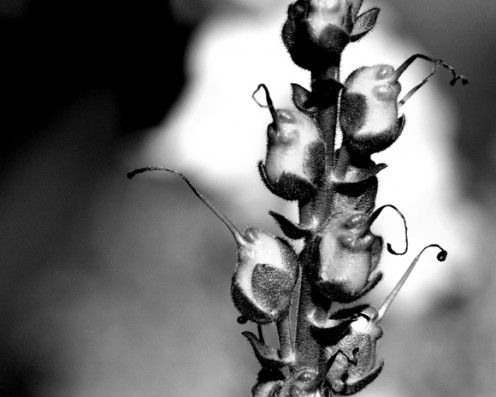
There is also the art of processing photos and perfecting your artwork. There are several controversial discussions that go over what is a “pure photo” and what is not pure. Unless you are in a situation where you have specific requirements for a photo, the choices are up to you to make. Black and white photography is one of my favorites as I already mentioned. If your camera does not shoot black and white, don’t worry; there are plenty of options available to be able to do this. The best way to approach this is to choose a subject that has a lot of contrast. If you have a frame that is filled with similar hues, you will end up with a gray photo as opposed to black and white. Choose a subject that is naturally interesting, something that makes you stop and think for a minute. Make sure that you pay attention to the subject’s surroundings, and how you approach the method to handle the surroundings. The key to black and white photography is to allow the subjects surroundings to work with the subject without overpowering. A brighter tone behind the flower that is blurred with depth of field can create a powerful highlight. A pattern of Christmas lights along with roses on a flower arch can create magical effects along with highlights and glistens on the roses. Water droplets on petals can create depth in a photograph along with contrasting textures. Flowers can be appreciated for their intricate architectural design, without being overpowered by their beautiful colors.
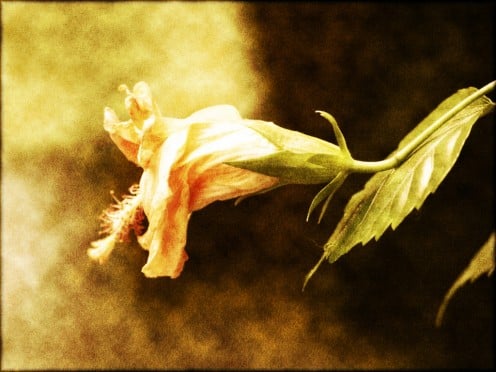
Tools of the Trade
If you choose to use photo-processing software, Adobe Photoshop is an excellent option. If photography is something that you plan to do on a regular basis the time it takes to learn this program as well as the money spent is worth it in the end. They also offer Adobe Photoshop Elements, which is specifically created for photo processing. There are several other specialty things that you can do with photos aside from just black and white. The possibilities only confined by imagination. One of my favorite things to do is to recreate vintage photos with my own personal photos. It adds character and gives a different perspective on the photo without even cropping or retaking. You can achieve this by downloading or making your own actions that will allow you to “play” through the steps you saved exactly the same as before with just a click of a button. There are several sites that host artists that allow a download of their actions for educational purposes such as http://www.deviantart.com/. This is a great way to learn some of the capabilities of the program.
Another option would be a free download of GNU Image Manipulation Program (GIMP) at www.gimp.org. This software includes a good portion of the same photo editing tools as well as some specialty tools as Adobe Photoshop, and it is completely free for both MAC and PC platforms.
Photography is something that needs to be a passion before it is a career. You have to know what you love, and why you love it, just as I love black and white photography, and my grandfather adored color photography. It isn’t always about pleasing others; you need to learn to love your own work before you can expect others to love it, and create something that you are proud to show as your own. Remember, mistakes are only learning experiences, and learning is what makes us stronger in our field.
Check out some other great tips and tricks of the trade
How To Pull Out Specific Colors Using Adobe Photoshop
This is a great how-to article that show you how to selectively pull our specific colors from a photo while keeping the rest of the photograph black and white. It is a quick and easy yet effective trick that is an essential for all photographer.
How To Photography Subjects in Museums
Museums are a great place to get amazing shots, as well as perfect your ability to work in very low light settings. It is one of the best places to get as close to history possible, and your subjects never complain about how long it takes you to get that shot.
How to Photograph Historic Reenactments and Events
Another great article that highlights a fun way to get up close and personal with history. This article gives helpful tips on how to minimize backgrounds that don't match the era, highlight the characters and really get results that best portray the event.




